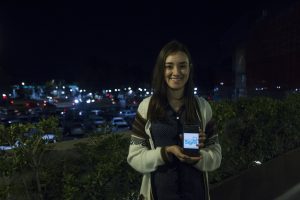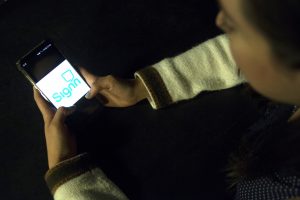
Guadalajara, Mexico, Feb 12 (EFE).– Young Mexicans from the western state of Jalisco developed a program to translate text and voice into the Mexican sign language to help facilitate communication among people with deficient hearing.
Briana Osorio, who started the project as a start-up in several public and private entrepreneurship programs, told EFE that the main idea of the “Sign’n” program is to serve as a tool for anyone who wants to learn sign language or have a conversation with people suffering from hearing loss.
“We want it to be a tool for learning if you have a deaf person in your social circle or simply if you find someone with hearing impairment and you don’t know how to communicate. This program will help you,” she said.
The users can dictate or write from their mobile phone a word or a phrase that will be interpreted and translated by artificial intelligence with the help of a virtual character; that is, the image of a person will appear, making the signs corresponding to that phrase or word.
A graduate in Process Engineering and International Trade from the University of Guadalajara, Osorio said that for each deaf person there are 10 interlocutors in their immediate social circle who do not know sign language and need to communicate with it.
The program will facilitate the inclusion of people with hearing loss not only in their social and family environments but also in the workplace, as anyone can use “Sign’n” for free.

The project is led by Osorio in collaboration with 3D modeling and animation experts, a linguist and people with hearing loss who contributed as advisors. The development of the program is also accompanied by members of the Association of Silentes of Jalisco and organizations that promote social inclusion.
The program is currently accessible on the internet, but will be available shortly as a free mobile application for smartphones. Companies that have employees with hearing impairment will also be able to acquire the software license.
“It is a version that we can provide to companies that seek to be socially responsible by hiring or caring for people with hearing loss. We will work with their protocols in accordance with the kind of work that these people are employed for,” Osorio stressed.
In the medium term the team will seek to develop a scanner with which people with hearing loss can use for getting the information available on websites translated into their own sign language and generate a self-learning process.
This accessibility tool will allow people with hearing impairment to learn freely, at their own pace and in a self-taught way.
“They grow up with sign language and express themselves in that way, but they don’t have access to information that way. For them, reading Spanish is complicated by the grammatical structure and we want them to be able to read information and study in their own language,” Osorio said.
